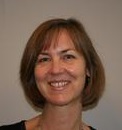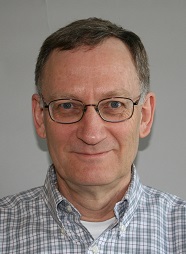Interview with Jennifer Groth and Torben Groth, ReSound
 Carolyn Smaka: Jenny and Torben, thank you for speaking with me today. Hearing aid battery life is an ongoing topic of interest, especially considering all the new hearing aid technology in recent years. Tell me about some of the different factors today that influence the life of a hearing aid battery.
Carolyn Smaka: Jenny and Torben, thank you for speaking with me today. Hearing aid battery life is an ongoing topic of interest, especially considering all the new hearing aid technology in recent years. Tell me about some of the different factors today that influence the life of a hearing aid battery.

Jenny Groth: There are two main contributing factors to hearing aid battery life. One is the energy source itself (the battery), and the other is the operating conditions of the hearing aid that influence power consumption technology, such as processing strategies and accessories, to name a few. Both of these factors heavily influence the user’s ultimate experience in terms of battery lifetime.
Carolyn: As professionals I think we take batteries for granted, but I was surprised to learn from our colleagues at Rayovac that there is tremendous ongoing research and development behind battery technology.

Torben Groth: That’s right. Most people also probably do not know that batteries are manufactured for different areas of the world, and the dominant humidity is part of that equation. Zinc-air batteries take in oxygen and are dependent on the humidity of the location. If you take a battery that is manufactured for Saudi Arabia to Florida, you will likely experience a shortened lifespan of that battery.
Carolyn: I did not know that. And here in the U.S. we are now using mercury-free zinc air batteries. Has that changed anything?
Torben: There is one important consideration to keep in mind with mercury-free zinc air batteries, and that’s the sticker that you peel off when you begin using a battery. That sticker is used to seal the battery from oxygen, which is what starts the chemical process. It is important to remove the sticker, start the chemical process and let the battery rest before you start using it. This step is even more important since the mercury-free batteries have been released.
Carolyn: What is that rest time? One minute?
Torben: It is a minimum of one minute to get it up to full capacity. If you skip this step, it will affect the capacity of the battery to some degree, which then affects the overall battery life. You need to activate the battery before you start drawing current. This is equally as important, if not more important, to do with the mercury-free batteries.
Carolyn: What would you say are the top aspects of the hearing aid technology that affect battery life?
Jenny: You have hardware-related power consumption, which is your basic current draw, power driving the different components, and power to the receiver. Some of those things will be dependent on the environment and the sound levels; the louder the sound, the higher the hearing aid output and the more current you will draw in driving the receiver. There is also some current draw related to the signal processing, including how many different algorithms are running and how efficiently they are coded.
Consumers sometimes ask us, “Which hearing aid features can I have my audiologist turn off so that my battery life will be longer?” Unlike turning down the brightness on your screen or driving slower, there is not a whole lot you can turn off in a hearing aid to save on battery life. The user does not have a lot of control over that. The manufacturers’ hardware and software design are what determines the power consumption. The user can optimize battery performance by letting the battery rest before they put it in the hearing aid and opening the battery door when they are not using the hearing aid.
Carolyn: Jenny, when you talk about the processing, does this mean that a newer platform will be more efficient than an older platform?
Jenny: It is analogous to getting a new computer. The new platform will be faster and more efficient, but then we load it up with more complicated applications, which is what you do when you get a new computer or phone. As an industry, we are all trying to do more advanced processing with the resources that we have, and because of this, we do not end up with more benefit in terms of battery lifetime.
Torben: When manufacturers bring out new processing chips, they tend to go to a different semiconductor technology. That will reduce the overall current consumption with the same amount of processing. But as Jenny pointed out, that reserve will very quickly be taken up by new processing algorithms.
Carolyn: Would you expect premium devices with their higher processing capabilities to have more current drain than an entry-level device?
Jenny: Maybe. I would say it depends on the platform. Manufacturers will build different technology levels on the same basic hardware. There might be a little bit of energy saved in the entry-level products, but I would be confident in saying that the user would not notice a significant difference in current drain or battery lifespan.
Carolyn: We have seen tremendous growth in wireless products. Would you expect more battery consumption when using wireless applications?
Jenny: Yes, particularly if you are using audio streaming. That will draw the most current. There are other wireless features that do not tax the system quite as much, such as use of a remote control. There is also a difference across technologies. The radio frequency wireless technologies will use more power than the near-field magnetic conduction technologies.
Carolyn: The hearing aid data sheet says the battery should last X hours or days. Where does that number come from, and how can we tell patients if that number is going to be accurate for their hearing aid settings?
Torben: The data sheet is based on the standard current consumption test that every manufacturer runs. It is based on measurements using a steady-state sound stimulus at 55 dB in a test box. You take what you think you are going to get from a standard battery and divide the current consumption into the capacity, and then you get a number of hours. We have variances in the batteries. We have variances in real-life situations over the standard situation that is defined. I would say that what you see in a datasheet will not be accurate for individual users. It is mandated that we test and report current consumption, but it is not mandated that we state the number of useable hours.
Carolyn: So what do we tell our patients?
Jenny: If a manufacturer reports typical hours of use, I would start by estimating 60% to 70% of that number, and using this as your starting point. There are so many variables that affect performance, as we discussed, and sometimes I explain those variables to patients. Each circumstance is individual; some people are going to get more and some people will get less than that.
Carolyn: Jenny, concerning rechargeable batteries, do you think there will be further development in that area in the future?
Jenny: I think consumers are surprised that hearing aids are not further along in terms of rechargeability, because so many other electronics have rechargeable batteries. That is understandable from their point of view, but the reason that we are sticking with the zinc-air for now, especially for the advanced technologies, is that zinc-air battery technology has a very high energy density - a lot of energy per unit of space. Consider also that users typically want their hearing aids to be tiny, so we need to get as much power packed into that little space as possible. The zinc-air battery is the only technology that can give us that.
Rechargeability and battery technology is an area of research that I am sure every manufacturer is working on. We do recognize that it is important for users, and we want to be able to offer something that would be a tangible benefit - batteries that last longer or are cheaper.
Torben: We had high hopes that a rechargeable zinc-air battery would come to market, but it seems to have stalled out. The lithium ion battery used in portable electronics is questionable because of a patient safety issue that has not been remedied at this point. We are currently at an impasse with rechargeable technology.
Carolyn: I heard about a solar-powered plane made that made a cross-country flight. You would think if they can solar power a plane, they could do something with hearing aids, too. What do you think about that?
Torben: On sunny days, I think that would be excellent. But there might be problems on a rainy day or when the sun sets. The surface area on a hearing aid is so small that you might not have enough area to power an instrument.
Carolyn: That makes sense. I guess the reality is that we are still recommending the same tried-and-true battery.
Torben: Yes. While there is a great deal of research and development behind battery technology, with ever-changing hearing aid technology and the requirements for hearing aids, there are also a lot of challenges. We always hope that something new is just around the corner.
Carolyn: I’m glad you brought up requirements. We have to consider the devices we are working with; they have to be small, they have to fit in the ear, and they have to be powered for a certain amount of time. If we did not have to meet any of those requirements, we might have several other options.
Thank you for your time today. This was a good discussion to set the record straight.
Jenny: You’re welcome. Anytime.
Torben: Thanks for having us.
For more information about ReSound, visit www.gnresound.com or the ReSound Expo Page on AudiologyOnline.



